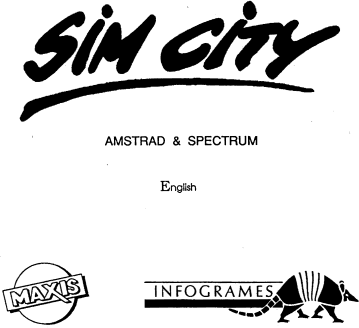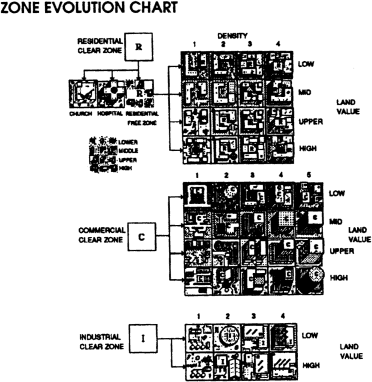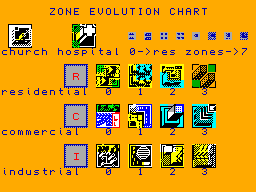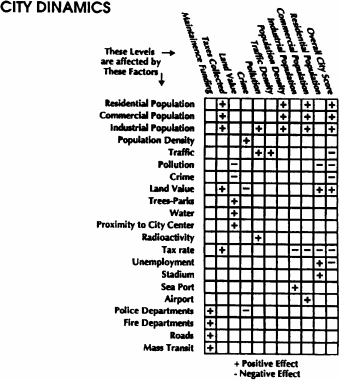PARKS can be placed on clear land. Parks, forests and water raise the land value of
surrounding zones. Parks can be bulldozed as fire breaks or reserve space for later mass
transit expansion.
It costs $10 to lay one segment of park.
RESIDENTIAL ZONES are where the Sims build houses, appartments and community
facilities such as schools and churches.
Factors influencing residential value and growth are pollution, traffic density, population
density, surrounding terrain, roadway access, parks, and utilities.
It costs $100 to zone one plot of land as residential.
COMMERCIAL ZONES are used for many things, including retail stores, office buildings,
parking garages, and gas stations.
Factors influencing the value and growth of commercial areas include internal markets,
pollution, traffic density, residential access, labor supply, airports, transit access and utilities.
It cost $100 to zone one plot of land as commercial.
INDUSTRIAL ZONES are for heavy manufacturing and industrial services.
Factors influencing the growth of industrial areas are external markets, seaports, transit
access, residential access, labor supply and utilities.
It costs $100 to zone one plot of land as industrial.
POLICE DEPARTMENTS lower the crime rate in the surrounding area. This in turn raises
property values. Place these in high-density crime areas. The efficiency of a station depends on
the level of police department funding.
It costs $500 to build a police station.
FIRE DEPARTMENTS make surrounding areas less susceptible to fires. When fires do occur,
they are put out sooner and do less damage if a station is near. The effectiveness of fire
containment depends on the level of fire department funding.
It costs $500 to build a fire station.





![[armadillo]](sim10.gif)